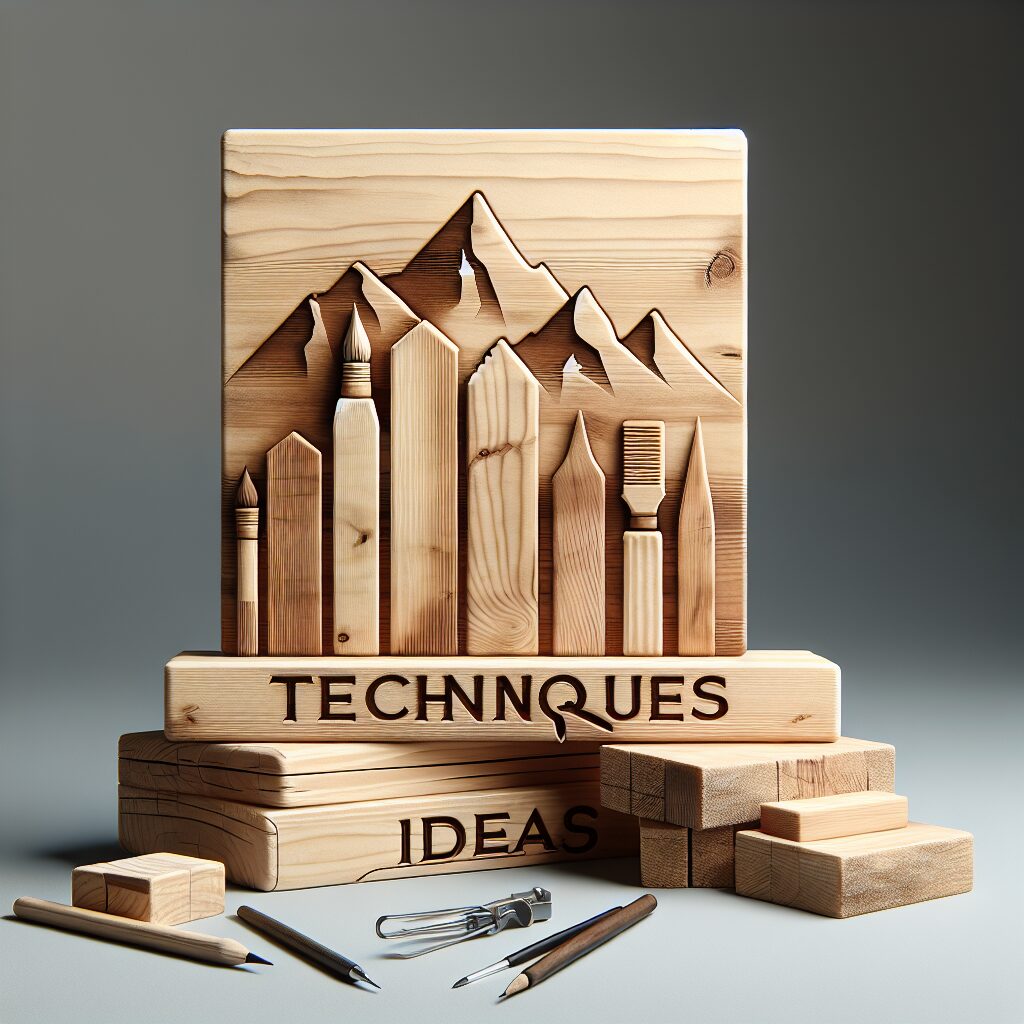When embarking on woodworking projects, one of the most crucial decisions you’ll face is selecting the right finish. The finish not only enhances the beauty of the wood but also protects it from environmental factors. Understanding the various types of finishes available can significantly impact the durability and appearance of your finished piece.
Understanding Different Types of Finishes
There are numerous finishes to choose from, each with its unique properties and applications. Some popular finishes include oil-based, water-based, and shellac. Oil-based finishes, for instance, penetrate deeply into the wood fibers, providing a rich, warm glow while enhancing the grain. On the other hand, water-based finishes dry quickly and are easier to clean up, making them ideal for beginners. For a more traditional approach, shellac offers a beautiful sheen but requires careful application to avoid streaks.
Choosing the Right Finish for Your Project
The choice of finish often depends on the specific requirements of your project. For instance, if you’re working on a piece that will be frequently used, such as a dining table, you might want to consider a more durable finish. A polyurethane finish is a great choice in this case, as it offers excellent resistance to scratches and stains. For decorative pieces that won’t see much wear, a simple wood finishing technique like a clear varnish or lacquer could suffice.
Factors to Consider When Selecting a Finish
Several factors can influence your choice of finish. First, consider the type of wood you are using; different woods absorb finishes differently. Additionally, think about the environment in which the finished project will reside. If it will be exposed to moisture, a waterproof finish is essential. Lastly, your personal aesthetic preference plays a significant role. Some woodworkers prefer a natural look, while others may want a glossy finish that enhances the color and grain of the wood.
Application Techniques for Finishes
Applying the finish correctly is as important as choosing the right one. Techniques can vary from brushing to spraying, and the method you choose can affect the final appearance. For a smooth finish, consider using a high-quality brush or a spray gun for an even coat. Don’t forget to follow the manufacturer’s instructions regarding drying times and application processes. If you’re unsure, you might find a helpful wood glues guide beneficial in understanding adhesion and compatibility with different finishes.
| Finish Type | Durability | Drying Time | Best Use |
|---|---|---|---|
| Oil-based | High | Slow | Furniture |
| Water-based | Medium | Fast | Indoor projects |
| Shellac | Medium | Fast | Decorative items |
When it comes to woodworking, the finish you choose can dramatically impact the aesthetics and durability of your projects. Different finishes serve various purposes, from enhancing the natural beauty of the wood grain to providing protection against moisture and wear. Understanding the characteristics of each type of finish is essential for achieving the desired results in your woodworking endeavors.
Types of Wood Finishes
There are several types of wood finishes available, each with its unique properties and applications. For instance, oil-based finishes penetrate the wood, providing a rich, warm appearance while highlighting the understanding wood grain. These finishes tend to be easy to apply and repair, making them a popular choice for many woodworkers. However, they can take longer to dry compared to other finishes, which may affect your project timeline.
On the other hand, water-based finishes dry quickly and are known for their low odor and easy cleanup. They form a protective layer on the surface of the wood, making them ideal for high-traffic areas. While they may not penetrate as deeply as oil-based options, they can still provide a beautiful finish that enhances the natural look of the wood. For those looking to explore different techniques, you might consider woodworking joinery methods that pair well with various finishes.
Choosing the Right Finish for Your Project
When selecting a finish, consider the specific requirements of your project. For instance, if you are working on furniture that will be exposed to moisture, a polyurethane finish can offer excellent protection. This type of finish creates a hard, durable surface that resists scratches and stains, making it a practical choice for tabletops and kitchen cabinets. Additionally, if you are interested in decorative techniques, chip carving techniques can be beautifully complemented by the right finish.
Another important factor to consider is the wood species you are using. Some woods, such as cherry and walnut, have natural oils that can affect how finishes adhere to the surface. Testing your chosen finish on a scrap piece of the same wood can help ensure that you achieve the desired effect without unpleasant surprises. Ultimately, the right finish can elevate your woodworking project, enhancing both its beauty and longevity.
As you wrap up your woodworking project, choosing the right finish is crucial for both aesthetics and durability. The finish you select not only enhances the beauty of the wood but also protects it from wear, moisture, and other environmental factors. With so many options available, it can be overwhelming to decide which one suits your project best.
Understanding Different Types of Finishes
When it comes to woodworking finishes, there are several types to consider. Each type offers unique characteristics and benefits that cater to different needs and preferences. For instance, oil finishes penetrate the wood, providing a natural look while enhancing the grain. They are relatively easy to apply and maintain, making them a popular choice for many woodworkers.
On the other hand, film finishes, such as varnish and polyurethane, create a protective layer on the surface of the wood. These finishes are known for their durability and resistance to scratches and chemicals. However, they can sometimes mask the natural beauty of the wood grain. Understanding these differences can help you make an informed decision based on the specific requirements of your project.
Factors to Consider When Choosing a Finish
Several factors should guide your choice of finish. First, consider the type of wood you are working with, as different woods may react differently to various finishes. For example, softer woods like pine may require a finish that offers a bit more protection, whereas hardwoods like oak can often showcase their beauty with a lighter finish.
Additionally, think about the intended use of the item you are finishing. If it’s furniture that will see heavy use, a more durable finish is essential. For decorative pieces, a simpler oil finish might suffice. Don’t forget to take into account the environmental conditions the piece will face, such as humidity and temperature fluctuations, as these can affect the longevity of the finish.
Finally, consider the application process. Some finishes require multiple coats and extensive drying times, while others can be applied quickly and easily. If you’re new to woodworking or short on time, you might prefer a finish that is straightforward to apply. Exploring wood veneering techniques can also provide insights into how different finishes interact with various wood types.
Finalizing Your Choice
After weighing your options and considering the specific needs of your project, it’s time to make a decision. Remember that the finish you choose will not only affect the look of your piece but also its durability and maintenance needs. Don’t hesitate to test a small sample of your chosen finish on a scrap piece of wood to see how it looks and feels before applying it to your final project.
Ultimately, the right finish should enhance your woodworking project while providing the protection it needs to stand the test of time. With careful consideration and a bit of experimentation, you can achieve a beautiful, lasting finish that showcases your craftsmanship.







